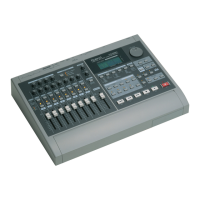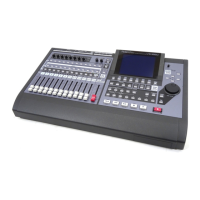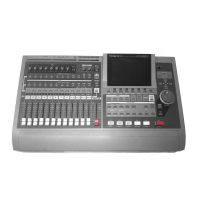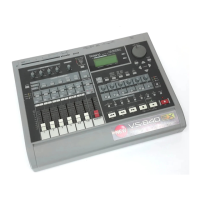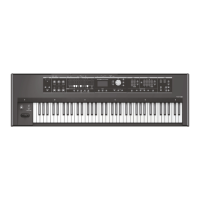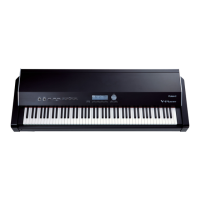27—Mastering and CD-R/RW Operations
Roland VS-2000 Owner’s Manual www.RolandUS.com 357
There are two times during the mastering process at which you can create a disk image
file. You can:
•
record your mastering tracks using the CDR recording mode
—This records your
mastering tracks as a disk-image file. When you save the project, the file is saved
with it. If you want to create additional audio CDs at a later time, when you load the
project, the disk image file loads as well, ready for burning.
•
create a temporary disk image on the fly as you burn a CD
—The VS-2000 can create a
temporary disk image file as you burn an audio CD if your mastering tracks weren’t
recorded using CDR mode. This takes a bit longer and, as soon as you’re done
burning CDs, the temporary disk image is discarded. If you want to burn more CDs
at a later date, the VS-2000 has to create another temporary disk image.
Multi-Project Compilation CDs
Many VS-2000 users treat each song—or other type of audio creation—as a separate
project. When you want to create a CD from multiple projects, you’ve got to bring all of
the audio from those projects together onto a single pair of mastering tracks. There are
a few ways to do this.
Imported Mastering Tracks
One method is to mix and master each project separately using the CDR recording
mode, and then use Region IMPORT (Page 269) to import all of their mastering tracks
into a single compilation project’s own mastering tracks. You can then do either of two
things. You can:
•
edit them into the desired order
—Each imported set of mastering tracks appears as a
pair of phrases in the playlist. It’s a simple matter to move them into the desired
positions with the desired spacing between each pair of phrases. By investing some
editing time, you can create an edited set of CDR-recorded tracks that can be
burned immediately onto an audio CD.
•
master them one-by-one
—You can place the imported mastering tracks on any
V-Tracks you want, and then build a final full-length mastering track selection-by-
selection (see “Building Mastering Tracks Selection-by-Selection” on Page 360).
This method requires less editing time, but means that you have to re-master all of
your elements in order to combine them.
Imported CD Tracks
As you perfect each mix, you can burn it onto a work CD. When you’ve got a
satisfactory version of each mix, you can use the VS-2000’s CD Capture feature
(Page 374) to import each song—one after another in the desired order—into a single
compilation project. Since you may develop multiple work CDs over the course of
creating and mixing and album, this method provides a handy way to bring together
your favorite mixes from different CDs. Once your mixes are imported and positioned
as desired, you can create new album-length mastering tracks for burning onto a final
CD.
Since the VS-2000’s CD Capture feature imports audio entirely in the digital domain,
your imported audio should be exactly the same as what your hear on the audio CD
from which it comes.
VS2000OMUS.book 357 ページ 2004年10月20日 水曜日 午後3時3分

